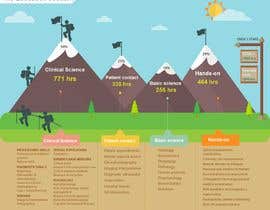The Mechanics And Results Of Cold Laser Therapy: Introducing The Scientific Understanding
The Mechanics And Results Of Cold Laser Therapy: Introducing The Scientific Understanding
Blog Article
Created By-Krog Daley
You may have become aware of cold laser therapy as a promising treatment option for numerous problems, yet have you ever wondered exactly how it actually works on a cellular degree? Recognizing the systems behind this treatment can clarify its efficiency in advertising recovery and minimizing swelling. By exploring the science behind cold laser therapy, you'll obtain insights right into the remarkable ways in which light can affect mobile procedures and facilitate cells repair service.
Exactly How Cold Laser Therapy Works
To recognize exactly how cold laser treatment works, you need to grasp the essential principles of just how light energy interacts with organic tissues. Cold laser therapy, also called low-level laser treatment (LLLT), makes use of certain wavelengths of light to permeate the skin and target underlying cells. Unlike the extreme lasers utilized in procedures, cold lasers give off low degrees of light that do not create heat or cause damage to the tissues.
When these gentle light waves get to the cells, they're taken in by parts called chromophores, such as cytochrome c oxidase in mitochondria. linked web site of biological actions, including increased mobile power manufacturing and the release of nitric oxide, which boosts blood circulation and lowers inflammation.
Additionally, the light energy can also stimulate the production of adenosine triphosphate (ATP), the energy currency of cells, helping in mobile repair service and regeneration procedures.
Fundamentally, varicose vein treaatment cortlandt manor of light power to advertise recovery and reduce pain in a non-invasive and mild fashion.
Systems of Action
How does cold laser therapy actually work to produce its healing results on organic cells?
Cold laser treatment, additionally referred to as low-level laser treatment (LLLT), runs with a process referred to as photobiomodulation. When the cold laser is applied to the skin, the light power permeates the tissues and is soaked up by chromophores within the cells.
These chromophores, such as cytochrome c oxidase in the mitochondria, are then boosted by the light power, causing a waterfall of organic reactions. One essential system of action is the enhancement of mobile metabolic process.
The taken in light energy boosts ATP manufacturing in the mitochondria, which is essential for cellular function and repair service. Additionally, cold laser therapy aids to reduce swelling by hindering inflammatory arbitrators and advertising the launch of anti-inflammatory cytokines.
This anti-inflammatory effect contributes to pain alleviation and cells recovery.
Therapeutic Results
Understanding the restorative impacts of cold laser therapy entails identifying exactly how the boosted cellular metabolic rate and anti-inflammatory properties add to its favorable end results on biological cells.
When the cold laser is put on the affected location, it boosts the mitochondria within the cells, causing increased manufacturing of adenosine triphosphate (ATP), which is critical for mobile feature and repair work. This boost in mobile energy increases the recovery process by promoting cells regeneration and reducing swelling.
Furthermore, the anti-inflammatory homes of cold laser therapy assistance to lower discomfort and swelling in the targeted location. By inhibiting inflammatory mediators and advertising the launch of anti-inflammatory cytokines, cold laser therapy aids in reducing discomfort and improving the general healing action.
This decrease in inflammation not just supplies prompt alleviation however additionally sustains lasting cells repair work.
Conclusion
Finally, cold laser treatment works by promoting mobile repair and tissue regrowth via photobiomodulation. Its anti-inflammatory buildings provide discomfort relief and reduce swelling by inhibiting inflammatory moderators.
This therapy uses an extensive method to healing, providing both instant alleviation and long-term cells repair benefits.
With its mechanisms of action, cold laser treatment proves to be a reliable and promising therapy option for a range of problems.
